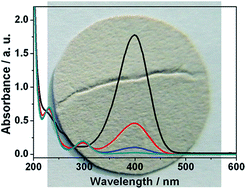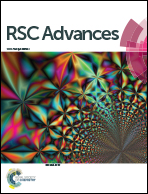Cellulose-based catalytic membranes fabricated by deposition of gold nanoparticles on natural cellulose nanofibres†
Abstract
Deposition of gold nanoparticles on titania gel film pre-coated cellulose nanofibres of filter paper yields bulk cellulose-based catalytic membranes, which exhibit excellent catalytic activities toward the reduction of 4-nitrophenol to 4-aminophenol through a facile filtration process.


 Please wait while we load your content...
Please wait while we load your content...